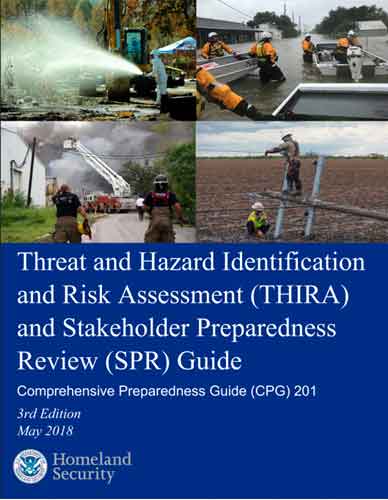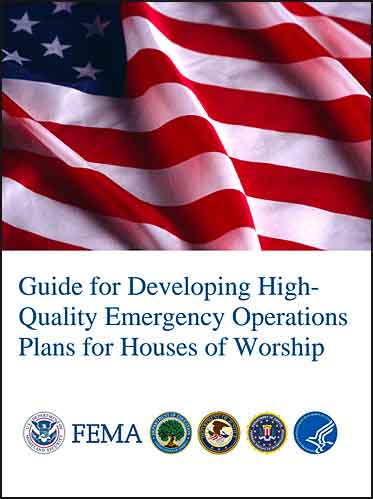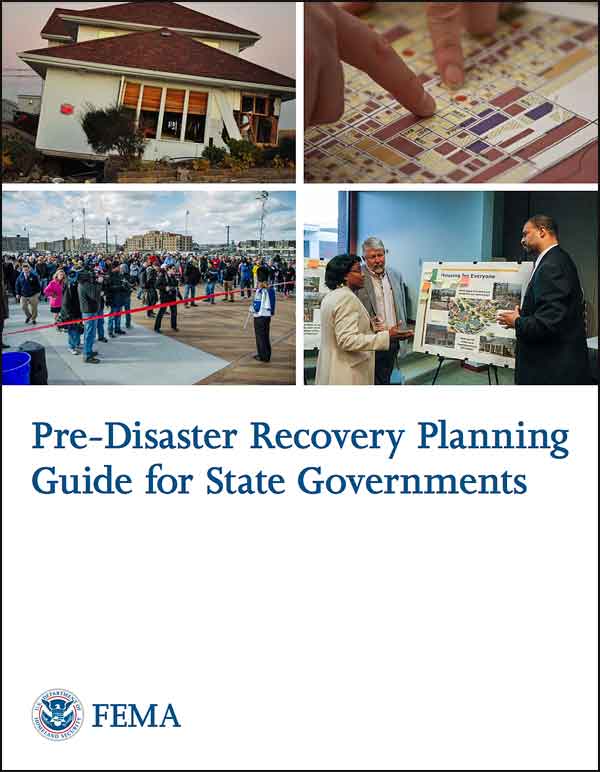
The Federal Emergency Management Agency (FEMA) has released the guide “Planning Considerations: Complex Coordinated Terrorist Attacks” to aid community partners in planning and preparing for complex coordinated terrorist attack scenarios.
The guide highlights the unique characteristics of complex coordinated terrorist attacks, identifies potential challenges, and discusses a six-step planning process.
It also provides information on identifying the capabilities necessary to respond to attacks using the Threat and Hazard Identification and Risk Assessment.
Strategic and Operational Planning
The National Incident Management System is intended to be used by the whole community.
The intended audience for this page is individuals, families, communities, the private and nonprofit sectors, faith-based organizations, and Federal, state, local, tribal, and territorial governments.
If you have any questions, please contact the National Integration Center at FEMA-NIC@fema.dhs.gov.
(Learn More. Dr. Berke’s PrepTalk explains how effective land-use planning can reduce vulnerabilities and strengthen community resilience. He highlights how mitigation planning is often disconnected from other urban planning initiatives that influence development in hazard areas. Courtesy of FEMA and YouTube. Posted on Mar 13, 2018.)
Introduction
Planning makes it possible to manage the entire life cycle of a potential crisis.
Strategic and operational planning establishes priorities, identifies expected levels of performance and capability requirements, provides the standard for assessing capabilities and helps stakeholders learn their roles.
The planning elements identify what an organization’s Standard Operating Procedures (SOPs) or Emergency Operations Plans (EOPs) should include for ensuring that contingencies are in place for delivering the capability during a large-scale disaster.

National Planning Frameworks
The National Planning Frameworks, which are part of the National Preparedness System, set the strategy and doctrine for building, sustaining, and delivering the core capabilities identified in the National Preparedness Goal.
They describe the coordinating structures and alignment of key roles and responsibilities for the whole community and are integrated to ensure interoperability across all mission areas.
The frameworks address the roles of:
- Individuals
- Nonprofit entities and nongovernmental organizations (NGOs)
- The private sector
- Communities
- Critical infrastructure
- Governments, and
- The nation as a whole
For more information on the National Preparedness Goal, the National Preparedness System, and National Planning Frameworks, please visit the National Preparedness Resource Library.
Comprehensive Preparedness Guides And Other Planning Guides
Comprehensive Preparedness Guide 101
FEMA’s Comprehensive Preparedness Guide (CPG) 101 provides guidance on the fundamentals of planning and development of Emergency Operations Plans (EOPs).
Following the initial release of CPG 101 in March 2009, FEMA solicited additional input from private sector, local, state, tribal, territorial, insular area, and federal stakeholders, which led to the development of a more user-friendly document that reflects recent initiatives and the current planning environment.
CPG 101 encourages emergency and homeland security managers to engage the whole community in addressing all of the risks that might impact their jurisdictions.
CPG 101 is the cornerstone for providing planning considerations for a variety of hazards, security issues and emergency functions.
Supplements to 101 will be issued as needed to expand on aspects of the guidance.
-
Plan Analysis Tool: The Plan Analysis Tool supplements CPG 101 by providing a one-page matrix to track the development timeline for a new plan or the revision of an existing plan.
-
The tool also captures the planning elements contained in CPG 101 to support the analysis by a jurisdiction of its existing plans.
-
Comprehensive Preparedness Guide 201
 FEMA’s Comprehensive Preparedness Guide (CPG) 201, Third Edition provides guidance for conducting a Threat and Hazard Identification and Risk Assessment (THIRA) and Stakeholder Preparedness Review (SPR), formerly State Preparedness Report.
FEMA’s Comprehensive Preparedness Guide (CPG) 201, Third Edition provides guidance for conducting a Threat and Hazard Identification and Risk Assessment (THIRA) and Stakeholder Preparedness Review (SPR), formerly State Preparedness Report.
CPG 201, Third Edition expands to include both the THIRA and SPR because they are interconnected processes that, together, communities use to evaluate their preparedness.
This Edition also introduces updates to both methodologies.
The updated THIRA adopts standardized language to describe impacts and targets and allows communities to collect more specific, quantitative information while also providing important context.
Where appropriate, this Edition highlights key changes from previous editions of CPG 201. This Third Edition supersedes the Second Edition of CPG 201.
Comprehensive Preparedness Guide 502
FEMA’s Comprehensive Preparedness Guide (CPG) 502, Considerations for Fusion Center and Emergency Operations Center Coordination focuses on the critical partnership and the exchange of information between fusion centers and Emergency Operations Centers (EOCs).
The guide does not provide a “one-size fits all” approach to fusion center and EOC coordination.
Rather, it outlines the information sharing roles of fusion centers and EOCs while identifying the planning and coordination considerations each entity must take into account.
This guide outlines considerations for the following as they pertain to fusion centers and EOCs: Familiarization with Capabilities, Needs and Requirements, Establishing Partnerships, Determining Processes and Training, Workshops and Exercises.
Engaging Faith-based and Community Organizations: Planning Considerations for Emergency Managers
Faith-based and community organizations offer a wide variety of human and material resources that can prove invaluable during and after an incident.
Engaging Faith-based and Community Organizations: Planning Considerations for Emergency Managers guide provides a methodology for emergency managers to engage with faith-based and community organizations in enhancing the resiliency of our nation.
By building partnerships with these groups, emergency managers can provide training and technical assistance to strengthen their skills, connect them with existing partners, and then integrate them into emergency management plans and exercises before an event occurs thus increasing response and recovery capability.

Planning Considerations: Complex Coordinated Terrorist Attacks




















